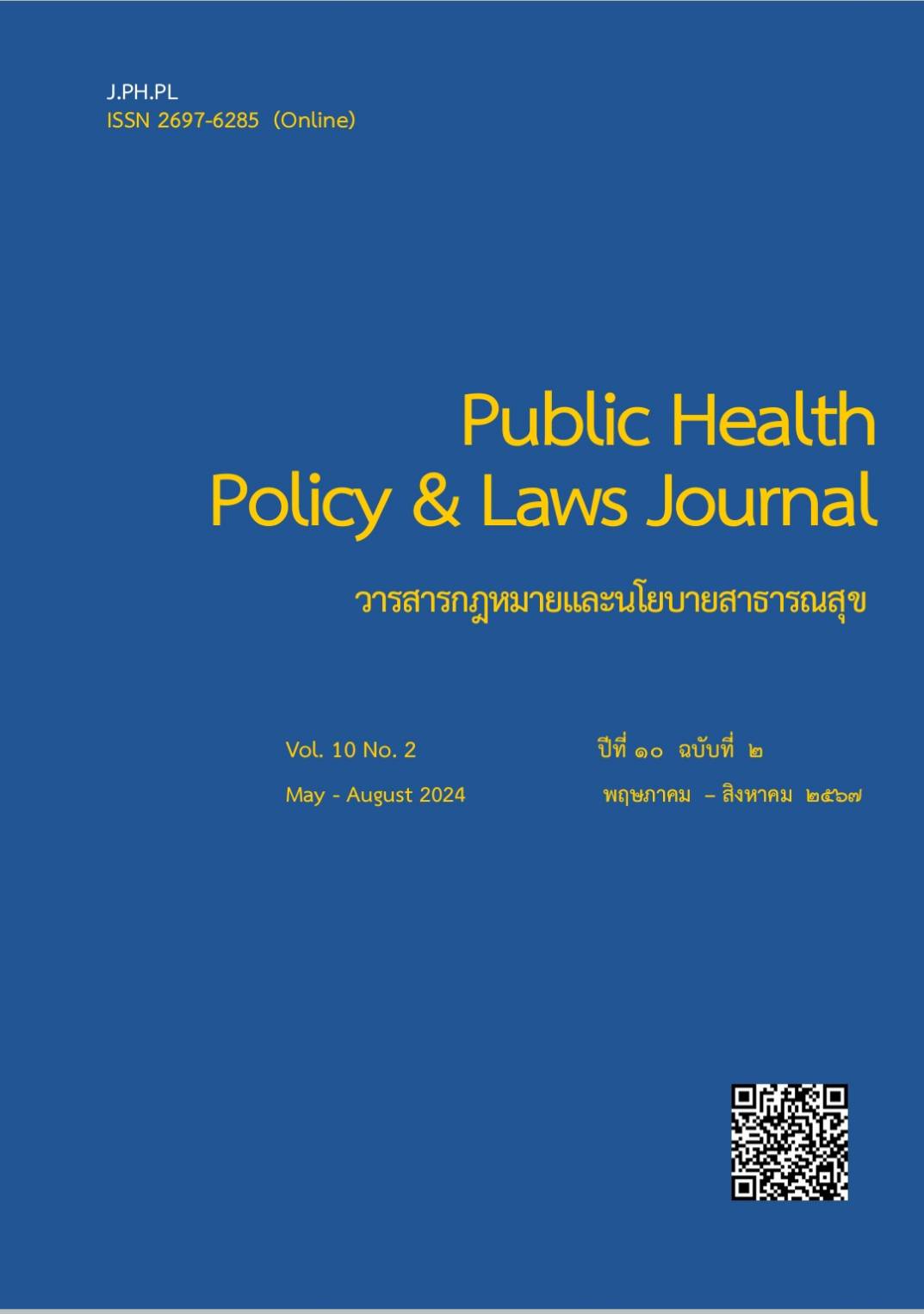Development of Online Advertising Problem Management Model of Aesthetic Medical Clinic, Chachoengsao Province.
Keywords:
aesthetic medical clinic, online advertising, entrepreneursAbstract
This is a before and after, quasi-experimental research. The objective is to develop and evaluate the outcome of aesthetic medical clinic’s problem management model for online advertising, in Chachoengsao province. The sample group consists of 32 aesthetic medical clinics participated in research activities. The researcher developed a problem-solving process consisting of four main activities: 1. Meetings to explain advertising control policies and enhance knowledge exchange for problem management strategies. 2. Providing feedback data on incorrect advertising assessments to entrepreneurs for direct acknowledgment and rectification. 3. Developing an online media advertising consultation system. 4. Inspecting the clinic to identify problems and remind entrepreneurs to comply with the law. The research results found that the average knowledge level of entrepreneurs before and after the meeting was 6.63 ± 1.24 and 8.38 ± 1.01, respectively. The average attitude level of entrepreneurs before and after the meeting was 3.93 ± 0.46 and 4.20 ± 0.49, respectively. Comparing the levels of knowledge and attitudes before and after the meeting, there was a statistically significant difference (p-value < 0.05). The assessment of the legal correctness of online advertisements before and after participating in the research activities, found that entrepreneurs advertised legally at the rates of 32.27% ± 17.05 and 83.45% ± 25.63, respectively. Comparing the assessment of advertising before and after participating in the research activities, aesthetic medical clinics showed an increased in legal advertising compliance, with statistically significant (p-value < 0.05). Therefore, the problem-solving activities for online advertising should be continuously implemented and applied to other types of clinics, targeting specific groups based on their risk levels.
References
Ajzen, I. (1991). The theory of planned behavior. Organizational Behavior & Human Decision Processes. 50(2), 179-202.
Boonsin, C. (2022). Prevalence of illegal online advertisements among aesthetic medical clinics in Petchabun province. Thai Journal of Pharmacy Practice, 14(2), 416-423.
Chanwaro, K. (2023). Situation of Illegal Online Advertising in Aesthetic Medical Clinic, Chachoengsao Province. Public Health Policy & Laws Journal, 9(3), 483-498.
Department of Health Service Support. (2018). Guidelines for the operation of reviewing and approving advertisement or notices relate to sanatorium. https://hss.moph.go.th/ show_topic.php?id =2631
Jangjai, D. & Lerkiatbundit, S. (2014). Effectiveness of the Interventions for Reducing Illegal Advertising of Health Products among Local Radio Stations. Thai Journal of Pharmacy Practice, 6(1), 22-40.
Kejornruk, A. (2022). Illegal Advertisings through Social Media from Aesthetic Medical Clinics in Mahasarakham Province. Thai Journal of Pharmacy Practice, 14(3), 416-423.
Kongchum, R., T Chaisumritchoke, S. & Lerkiatbundit, S. (2019). Effects of Interventions for Illegal Advertising of Food and Drugs among Local Radios. Thai Journal of Pharmacy Practice, 11(3), 586-602.
Rujirayunyong, T. (2019). Intervention for the Problems on Illegal Health Products Advertising on Radios through Participation among Community Network in Lopburi. Thai Journal of Pharmacy Practice, 11(3), 678-696.
Saksri, Y. (2018). Relationship between Knowledge, Attitude and Practice Towards Prevention of Surgical Site Infection During Intraoperative Period Among Perioperative Nurses. (Master’s thesis, Prince of Songkla University) https://kb.psu.ac.th/psukb/handle/2016/12524
Sanatorium Act, 4th ed., B.E. 2559. (20 December 2016). Royal Gazette. No.133 Part 107A pp. 41-49.
Sanatorium Act B.E. 2541. (24 March 1998). Royal Gazette. No.115 Part 15A pp. 32-47.
Downloads
Published
How to Cite
Issue
Section
License
Disclaimer and Copyright Notice
The content and information presented in articles published in the Journal of Law and Public Health Policy represent the opinions and sole responsibility of the respective authors. The editorial board does not necessarily agree with or assume any responsibility for the views expressed.
All articles, data, content, images, and other materials published in the Journal of Law and Public Health Policy are the intellectual property of the journal. Any individual or organization wishing to reproduce, distribute, or otherwise use the entirety or any part of such materials must provide proper citation.





